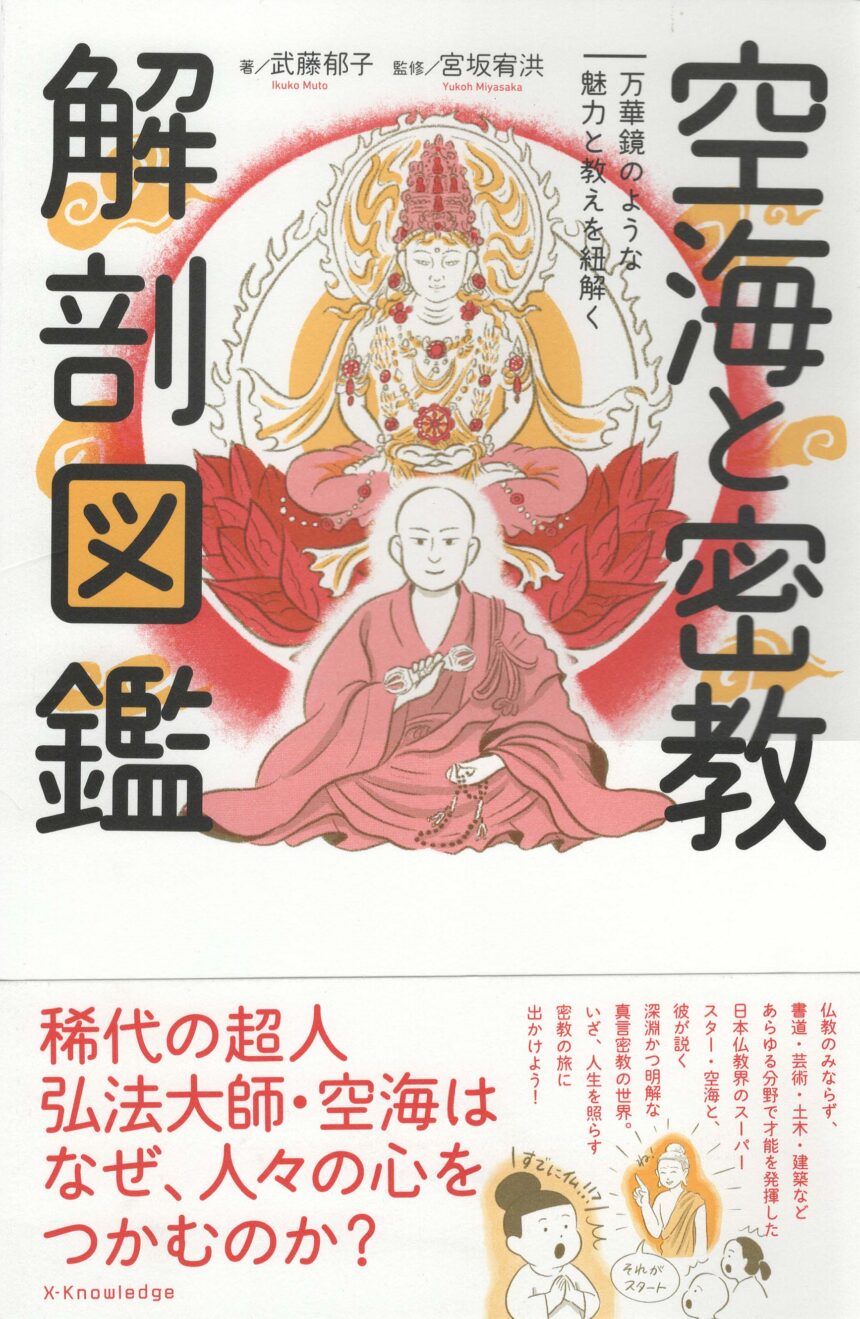【In English】
I am scheduled to serve as a tour guide for very important guests from Papua New Guinea in this month. The tour course will be a bit different from the normal ones that I have committed so far. One of the destinations is Toji, the East Temple in Kyoto, and the 5 storied pagoda (which is seen from the Bullet train’s window) is well known as the symbol of the old capital.
Since I have almost no knowledge about the temple, I read the book titled “Anatomic picture book of Kukai and Esoterism”, as it was built by Kukai in 835 under the order of the Emperor Saga. But the book is written in so detailed and heavily manner that I almost couldn’t catch up on the content. Some points about the temple that I managed to get were as follows;
1) Toji was originally built for stabilizing internal affairs using Buddhism or a thought that Buddhism has power to protect a country of Japan
2) The Emperor Jun-na, entrusted Kukai (774 – 835) to protect the country and the imperial family by the Esoterism that Kukai had brought back from Tang dynasty, i.e., Shingon-sect.
3) Shingon -sect., together with Tendai-sect brought back by Saicho (767 – 822) became the precursors of other newly emerged sect in late Heian to early Kamakura period
4) Some features of the Esoterism are, for examples,
(a) Main message: Sokushin-Jobutsu (to learn the equality and dignity of ‘Life’ and realize the wisdom of Dainichi Nyorai in this world)
(b) Mandala: Sanctuary, Buddhahood and/or the world view of Buddhism visually and symbolically by means of statutes of Buddha, symbols and characters
5) Toji became the basic training hall of Shingon Esoteric Buddhism, while Koyasan, which was also started by Kukai became Zen training place
Anyway, the VIPs will definitely not show any interest in such complicated knowledge in my poorest explanation. I have to make efforts and acquire much more clearly understandable way to make them nod in satisfactory manner.
【In Japanese (日本語)】
タイトル:「空海と密教」の解剖図鑑
今月(9月)、パプアニューギニアからやってこられる賓客のツアーガイド(通常の個人旅行ではなく、国際会議等が主目的のお客様への”おもてなしツアー”)を務めることになりました。ツアーコースは、これまで私が担当してきた通常の個人ツアーコースとは少し異なります。その目的地の1つは(京都駅のすぐ南にある)東寺で、新幹線の窓から見えるその五重の塔は古都のシンボルとしてよく知られています。
私は(個人的に出向いたことはありますが)、この寺についてほとんど知識がないので、「空海と密教の解剖図鑑」という本を読んでみました。この寺は835年に嵯峨天皇の命により空海が建立したとのことです。しかし、この本はあまりにも詳細かつ丁寧に書かれているので、(私の読解力では)ほとんどついていくことができませんでした。私が得ることができたポイントは以下のようなものです。
1) 東寺はもともと仏教を利用して内政を安定させるため、あるいは仏教の教えには日本の国を守る力が秘められているという考えから天皇の命により建てられた
2) 淳和天皇は空海(774年 – 835年)に、空海が遣唐使として習得し持ち帰った真言密教によって国と皇室を守るよう託した。
3) 真言密教(東密)は、最澄(767 – 822)が持ち帰った天台密教(台密)とともに、平安時代後期から鎌倉時代初期にかけて新たに出現した他の仏教宗派の先駆けとなった。
4) 密教の特徴としては、例えば、以下を挙げることができると思います;
(a) 主たる教え:即身成仏(「いのち」の平等性と尊厳を学び、この世で大日如来の知恵を実現すること)
(b) 曼荼羅:仏像、シンボル、文字によって視覚的かつ象徴的に表現された聖域、仏性、および/または仏教の世界観が表現されている
5) 東寺は真言密教の根本道場となり、同じく空海によって開かれた高野山は修禅道場となった
何はともあれ、私の下手な説明ではVIPの方々 はこのような複雑な知識へはまったく興味を示していただけないことは間違いありません。私は、大事なお客様方に十分に納得してご理解してもらえるようにもっと説明する内容と表現方法に工夫をする必要があると考えております。
Kind of a Buddhist Statue (仏像の種類)

The Course of the Envoy to Tang Dynasty China & the Required Number of Days (遣唐使のコースと所要日数)

About the Editorial Supervisor & the Author


Five-storied Pagoda of Toji temple (東寺の五重塔)

















No comments yet.